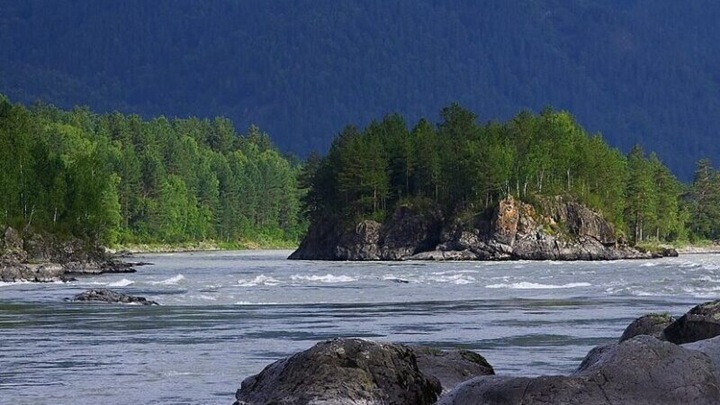Siberian Rivers, Aral Tears: Soviet project’s lingering impact

The late 1980s marked a tumultuous period for the Soviet Union, with events like the 1989 withdrawal from Afghanistan and the 1986 decision to halt the colossal project to divert Siberian rivers to Central Asia deeply etched in public memory. Yet, other contemporary milestones, such as writer Sergei Zalygin—a key opponent of the diversion—receiving the Hero of Socialist Labour award in 1988, or Afghan cosmonaut Abdul Ahad Momand carrying his nation’s flag into orbit aboard a Soviet spacecraft that same year, have largely faded into obscurity, symbols of an era on the cusp of profound change.
Over three and a half decades later, Central Asia is a vastly transformed region. National flags have changed – Russia’s once, Afghanistan’s thrice – and the destinies of individuals from that era have diverged dramatically. Momand, once a Hero of the Soviet Union and Afghanistan, now resides in Germany. His backup, Afghan Tajik Mohammed Dauran, became a general fighting with the Northern Alliance against the Taliban. Meanwhile, Salizhan Sharipov, born in Kyrgyzstan, carried the Tajik flag to space, honoring his Tajik grandfather, a poignant nod to intertwined regional heritages even as direct Tajik representation in space remains a costly, unfulfilled prospect.
The grand Soviet-era visions of transforming Central Asia’s arid landscapes into flourishing resorts and economic hubs around the Caspian and Aral Seas have given way to a starkly different reality. The Caspian Sea’s water level is declining due to multiple factors, while the Aral Sea has shrunk to a fraction of its former size, leaving behind a toxic desert and triggering an ecological catastrophe for the region. Speculation once arose that halting the Ob River diversion, intended to replenish the Aral, was a deliberate move to weaken ties between Russia and Central Asia, a theory now largely academic given the passage of time and loss of key figures.
Amidst this bleak picture, Uzbekistan has notably taken steps to mitigate the Aral Sea’s desiccation, focusing on internal water management reforms such as lining irrigation canals and adopting drip irrigation – techniques discussed for over half a century but slow to implement. These efforts have recently drawn attention from international players, including the United States, which some observers in Russia interpret as a potential avenue for political leverage in the strategically vital region where water scarcity is a critical concern. The challenge of efficient water use persists, despite ancient techniques like the 4,000-year-old Chinese “Olla” pot irrigation offering timeless lessons in conservation.
The abandoned Siberian river diversion project itself, a plan of breathtaking ambition conceived to channel a portion of the Ob River’s flow southwards, faced a formidable array of unanswered questions. Beyond the astronomical costs and the immense energy required to pump vast quantities of water, daunting ecological uncertainties loomed. Concerns included the impact of reduced freshwater inflow on the Arctic Ocean’s salinity and climate patterns, the potential for newly exposed peat bogs along the Ob to ignite, and the risk of waterlogging and soil salinization in Central Asian territories. Some experts even feared a southward shift of the cold frontier.
The project’s demise was ultimately hastened by a powerful chorus of opposition, notably from prominent Soviet writers like Viktor Astafyev, Valentin Rasputin, and Sergei Zalygin. In a widely publicized 1986 letter, they decried the potential ecological damage, famously labeling the Arctic Ocean the “weather boiler” for the entire planet. Their impassioned plea, supported by influential Communist Party figures such as Yegor Ligachev, effectively sealed the project’s fate, turning a 1986 Writers’ Union congress into what was jokingly dubbed the “meliorators’ congress” for its focus on the issue. This intellectual resistance underscored a growing environmental consciousness, even within the Soviet system.
Despite its official cancellation, the idea of reviving the river diversion flickered briefly in the early 21st century, championed by leaders in Kazakhstan and former Moscow mayor Yuri Luzhkov. Academic circles also revisited the concept; in 2008, the Siberian Branch of the Russian Academy of Sciences acknowledged the issue’s public re-emergence at presidential levels within the CIS but reiterated that the question of redistributing West Siberian water resources remained complex and open. However, these discussions failed to gain significant traction against the backdrop of new geopolitical realities and persistent unresolved concerns.
Today, nearly four decades after its cancellation and with the first quarter of the 21st century drawing to a close, the prospect of diverting Siberian river flows to Kazakhstan and the Aral Sea appears more remote than ever. The shifting geopolitical landscape, coupled with unresolved issues like the lack of water-sharing agreements for rivers like the Irtysh—whose flow is already diminished by upstream usage by China—and the sheer economic and environmental hurdles, suggests that this Soviet-era mega-project is likely to remain confined to history books, a monumental testament to past ambitions and a cautionary tale for future endeavors.